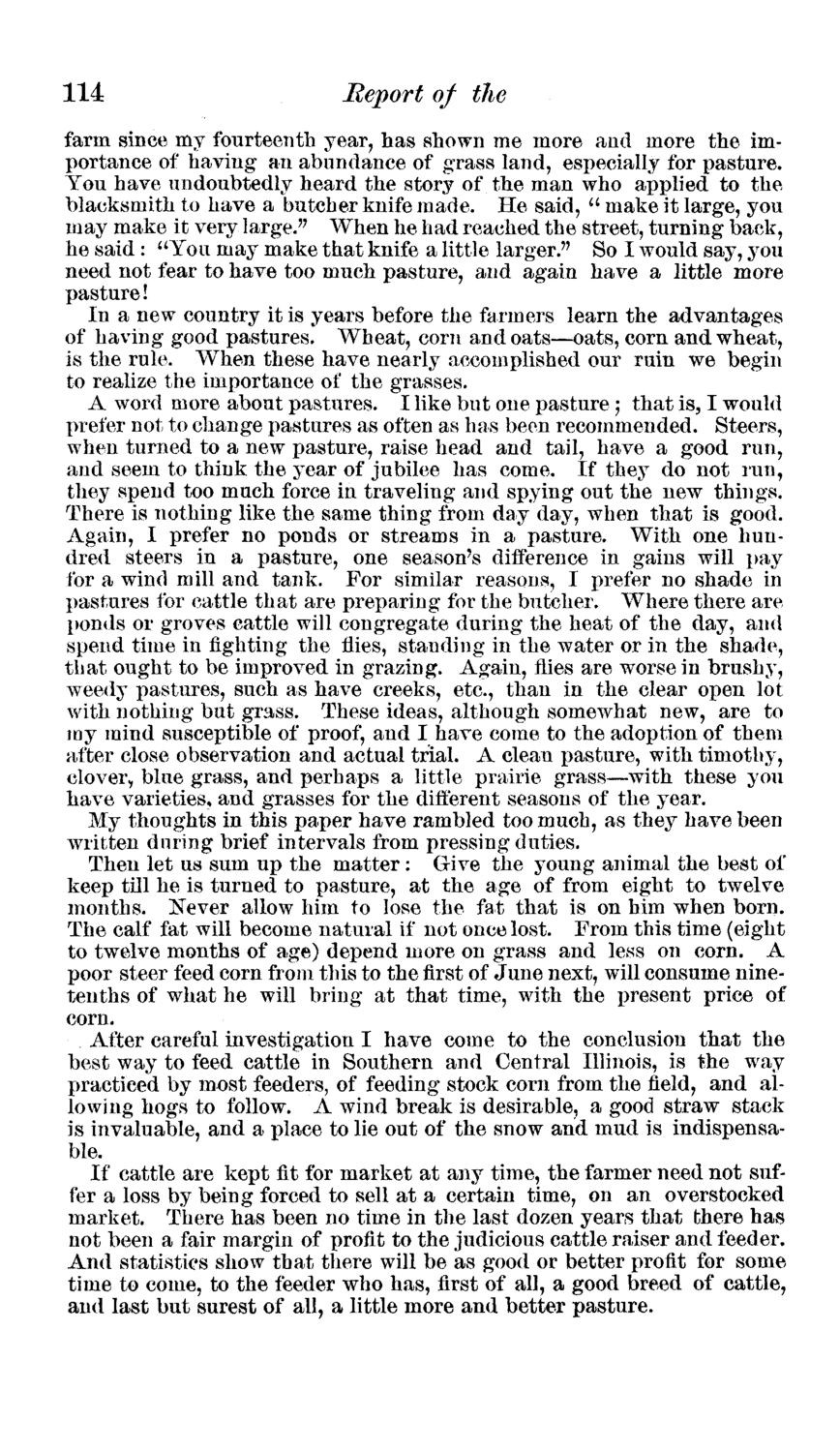| |
| |
Caption: Board of Trustees Minutes - 1874
This is a reduced-resolution page image for fast online browsing.

EXTRACTED TEXT FROM PAGE:
114 Report of the farm since my fourteenth year, has shown me more and more the importance of having an abundance of grass land, especially for pasture. You have undoubtedly heard the story of the man who applied to the blacksmith to have a butcher knife made. He said, " make it large, you may make it very large." When he had reached the street, turning back, he said: "You may make that knife a little larger.7' So I would say, you need not fear to have too much pasture, and again have a little more pasture! In a new country it is years before the farmers learn the advantages of having good pastures. Wheat, corn and oats—oats, corn and wheat, is the rule. When these have nearly accomplished our ruin we begin to realize the importance of the grasses. A word more about pastures. I like but one pasture; that is, I would prefer not to change pastures as often as has been recommended. Steers, when turned to a new pasture, raise head and tail, have a good run, and seem to think the year of jubilee has come. If they do not run, they spend too much force in traveling and spying out the new things. There is nothing like the same thing from day day, when that is good. Again, I prefer no ponds or streams in a pasture. With one hundred steers in a pasture, one season's difference in gains will pay for a wind mill and tank. For similar reasons, I prefer no shade in pastures for cattle that are preparing for the butcher. Where there are ponds or groves cattle will congregate during the heat of the day, and spend time in fighting the flies, standing in the water or in the shade, that ought to be improved in grazing. Again, flies are worse in brushy, weedy pastures, such as have creeks, etc., than in the clear open lot with nothing but grass. These ideas, although somewhat new, are to my mind susceptible of proof, and I have come to the adoption of them after close observation and actual trial. A clean pasture, with timothy, clover, blue grass, and perhaps a little prairie grass—with these you have varieties, and grasses for the different seasons of the year. My thoughts in this paper have rambled too much, as they have been written during brief intervals from pressing duties. Then let us sum up the matter: Give the young animal the best of keep till he is turned to pasture, at the age of from eight to twelve months. Never allow him to lose the fat that is on him when born. The calf fat will become natural if not once lost. From this time (eight to twelve months of age) depend more on grass and less on corn. A poor steer feed corn from this to the first of June next, will consume ninetenths of what he will bring at that time, with the present price of corn. After careful investigation I have come to the conclusion that the best way to feed cattle in Southern and Central Illinois, is the way practiced by most feeders, of feeding stock corn from the field, and allowing hogs to follow. A wind break is desirable, a good straw stack is invaluable, and a place to lie out of the snow and mud is indispensable. If cattle are kept fit for market at any time, the farmer need not suffer a loss by being forced to sell at a certain time, on an overstocked market. There has been no time in the last dozen years that there has not been a fair margin of profit to the judicious cattle raiser and feeder. And statistics show that there will be as good or better profit for some time to come, to the feeder who has, first of all, a good breed of cattle, and last but surest of all, a little more and better pasture.
| |